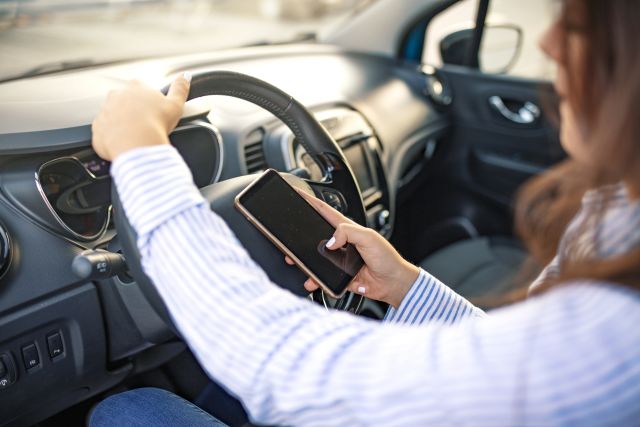Updated on March 27, 2023.
When you’re behind the wheel, there are lots of things that you probably view as threats to your safety: poor traffic conditions, bad weather, other drivers changing lanes without signaling. But there’s another major threat—and you may be surprised to learn that if you drive while you’re distracted, it’s you.
What it means to drive distracted
The Centers for Disease Control and Prevention (CDC) says that distractions while driving can be narrowed down to three broad categories:
- Visual, or looking at something other than the road
- Manual, or taking your hands off the steering wheel
- Cognitive, or letting your mind wander away from the task of driving
Distractions can be anything a driver might be doing or paying attention to besides driving, including adjusting audio or climate controls, adjusting other vehicle-related controls (like headlamps, mirrors, or seat belts), eating or drinking, smoking, daydreaming, and interacting with cell phones.
Thanks to state laws against texting and driving, as well as widespread cell phone-centered safety campaigns, the dangers of driving while engaging with a phone are increasingly well known. Despite that, many parents still try to multitask while driving.
A 2018 study published in the Journal of Pediatrics surveyed parents and caregivers of kids between the ages of 4 to 10. Nearly half—47 percent—said that in the prior three months they’d talked on a handheld cell phone. About 33.7 percent read texts, 26.7 percent sent texts, and nearly 14 percent engaged in social media while driving with their child in the car.
In a 2019 survey study published in JAMA Pediatrics, researchers found that of the parents interviewed with children younger than age 14, the majority had read and written texts while driving within the previous 30 days. Millennial parents (born between 1981 and 1996) did so much more often than older parents.
How you can distracted driving avoid accidents
The fact that people take their eyes off the road is frightening, and so are the statistics. According to the National Highway Traffic Safety Administration, distracted driving caused 3,142 deaths in 2020, a slight increase from 2019, even though travel declined for a time due to the COVID-19 pandemic. The CDC puts this another way: About nine people are killed each day in the United States from distracted driving. What’s more, an additional 324,652 people were injured in motor vehicle collisions involving a distracted driver in 2020. While statistics for children are not specified, they are included in these fatalities and injuries.
So, what to do? Recognition of the danger is the crucial first step. While many drivers are aware of the grim statistics, some still believe that an accident won’t—or can’t—happen to them. This is an example of optimism bias—when a person exaggerates the likelihood of good events and underestimates the likelihood of bad events.
Several studies have found that if drivers optimistically believe they have 1) great driving skills and 2) control over any given driving situation, then they’ll be more likely to take dangerous risks while driving.
Drivers with optimism bias assume they’re in control and doing great, and so the rules don’t really apply to them. But the truth is, an accident can happen to anyone. Here are four guidelines to follow when you’re behind the wheel:
Minimize distractions: Adjust mirrors and seating before your trip. Don’t apply makeup, eat lunch, or fuss with stereo buttons while you’re driving. Make sure children know the rules of the vehicle—no yelling or fighting—and consider providing entertainment, especially during long rides. Transporting animals? Secure your pets as best you can.
Know the law: Different states have different rules when it comes to distracted driving, especially if it concerns texting or talking on the phone. About half of states have banned handheld phone conversations, while almost all of them ban texting.
Pull over: If you need to text or call someone, don't do it while you’re driving. Instead, pull to a safe area on the side of the road. If you’re stuck in traffic or the highway is too busy, ask a passenger to do the communication for you.
While you can’t control everyone on the road, you can do your part to minimize dangers to you, your family, and the people around you. Avoiding distracted driving is a good start.







